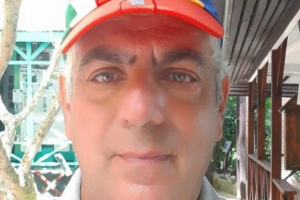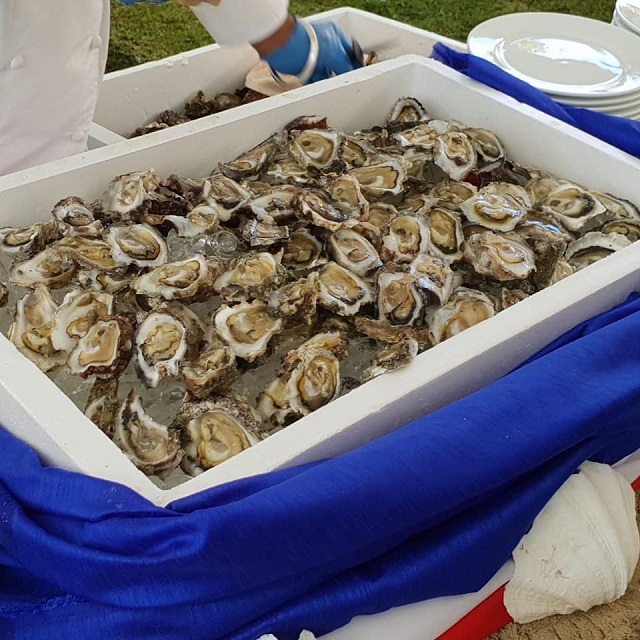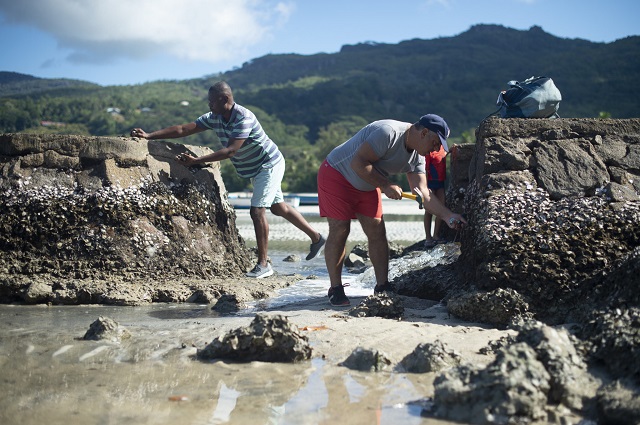Frenchman Olivier Levi dives into pilot production of rock oysters in Seychelles
The Interview |Author: Salifa Karapetyan Edited by: Betymie Bonnelame | April 1, 2023, Saturday @ 10:00| 43733 views
A team led by Frenchman Olivier Levi received an aquaculture research and development licence for rock oysters. (Seychelles Conservation and Climate Adaptation Trust)
(Seychelles News Agency) - In December 2022, a team led by Frenchman Olivier Levi received an aquaculture research and development licence for rock oysters, under which they will be able to carry out research, trials, and pilot production.
The team is conducting a feasibility study to operate a rock oyster farm with the end product being made available for local and international consumption.
SNA met with Levi to learn more about the project.
SNA: What is the rock oyster project about?
OL: The rock oyster project is one that is looking at the feasibility of producing oysters in Seychelles. We got a grant from the Blue Grant Fund (BGF) and SeyCCAT (the Seychelles Conservation and Climate Adaptation Trust). The BGF works with the Blue Economy and they have a fund to help all new aquaculture projects and the Blue Economy. In our case, aquaculture is something quite new, we are the first ones involved in the process of growing oysters in Seychelles.
We have passed through lots of difficulties in terms of it being very hard work in terms of presenting the project and submitting them to get participation finance from the Blue Grant Fund.
SNA: Who are you partnering with to bring the project to fruition?
OL: We have some partners who specialise in aquaculture and who have experience in the field. They are our go-to people when we need assistance. These partners are from Mauritius where oysters and other kinds of seafood are already being farmed. In Mauritius, they have quite the same quality of water as we do.
The project is also coordinated by SeyCCAT, the Seychelles Fishing Authority (SFA) as well as the Ministry of Fisheries. We also had lots of meetings with different organisations such as IDC (Islands Development Company) especially when we were thinking of where to realise the project.
|
|
| Levi (right) and Joseph Rath collect naturally growing rock oysters. (Seychelles Conservation and Climate Adaptation Trust) Photo License: All Rights Reserved |
SNA: How long will it take to complete assessing the feasibility of the project?
OL: For the first four years, we are only looking at the feasibility of the project. Originally, the project was supposed to last for two years, but we need two years to grow the oysters. As the project has already taken two years to kick off in terms of setting it up, we have requested an extension from SeyCCAT for the last two years which is totally normal because we did not expect that it would take so much longer to get all the proper documentation. We want to be certified worldwide.
SNA: What are the procedures that the project needs to go through before production can take place?
OL: The first phase is to prove that we can grow oysters and that the quality is the best. At the moment we are doing a lot of testing. Through the testing that we are doing with the Seychelles Bureau of Standards laboratory, we have to prove that we have the best quality water, that our oysters have no traces of chemicals, and that we have the best oyster in the world.
We are confident that we can achieve this because we have the best, unpolluted quality of water. We have a good possibility to show that we are different from what is being produced in Europe, South Africa, and Mauritius. Once we have passed this step, we will be able to proceed to farming.
Currently, we are in the second phase of the project. We are collecting the spats - baby oysters - through spat collectors from the sea. Once caught, we will let them grow up to three inches. Once they reach this size, following daily maintenance, and cleaning, we will have them grow on long-line pillars. These are placed in the water to which we attach packs and place the oysters so that they can grow naturally.
During the next four to five months, we will start looking for sponsorship and fundraising. We already have some good companies that are interested in investing in this project because they know how good it is, not only for the Blue Economy but also because it will be a project that will be profitable for everyone.
 |
| Rock oysters grow naturally in Seychelles. (Seychelles Conservation and Climate Adaptation Trust) Photo License: All Rights Reserved |
SNA: Why did your team choose to research the possibility of growing oysters in Seychelles?
OL: Locally, most Seychellois use oysters in the form of oyster sauce. Many do not eat the product. I am originally from France, and together with the team we are fond of oysters. We found it illogical that we have to import a product from 9,000 kilometers away when we have the possibility to produce oysters here.
We have oysters growing naturally in our waters. It shows that we can have our own oyster farming. When we heard that the economy of Seychelles was open to the possibility to do aquaculture, we immediately showed our interest to do oyster farming.
SNA: Where will the research take place?
OL: The project needs to take place in an area where there is a mix of freshwater and seawater. It is also important that the structure is always submerged under the sea. The main area to do the tests is around the coastline of Anse Etoile and La Retraite. It is a good place because it has all the qualities that are required. We have no issue with tourism as this place is not in an area that has hotels.
SNA: What benefits will this form of aquaculture bring to the country and what can be expected once the project is up and running?
OL: The project is a good thing for the future of the economy of Seychelles for different reasons. It will create employment and we will produce a product that we will be able to sell to hotels directly and not have to import it. We will have to sensitise the population to this new product. We do not want it to be consumed only by foreigners, and we also want to commercialise it through Oceania Fisheries or the Seychelles Trading Company (STC). We will do some workshops to sensitise the population and maybe we will go on to do our own oyster sauce. This is the first part of what we want to do locally.
The second part will be for exportation if we are able to label our product as a golden oyster, as the purest oyster in the world. There are many possibilities, but what is important to know is that it will bring revenue to Seychelles.
We saw how sensitive tourism is due to COVID, and as such, it is important to have different types of revenues coming into the country. Oyster, like all aquaculture projects, is a possibility of bringing new revenue streams to Seychelles.
We might do other seafood later because if it is working with oysters it will work with mussels and other seafood. We cannot do everything at the same time.
Back

